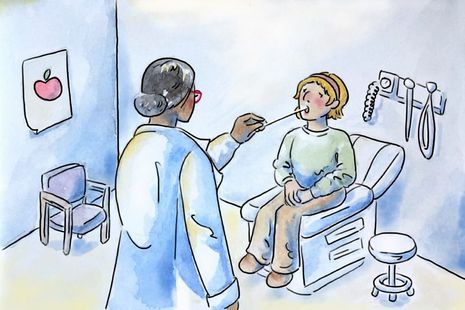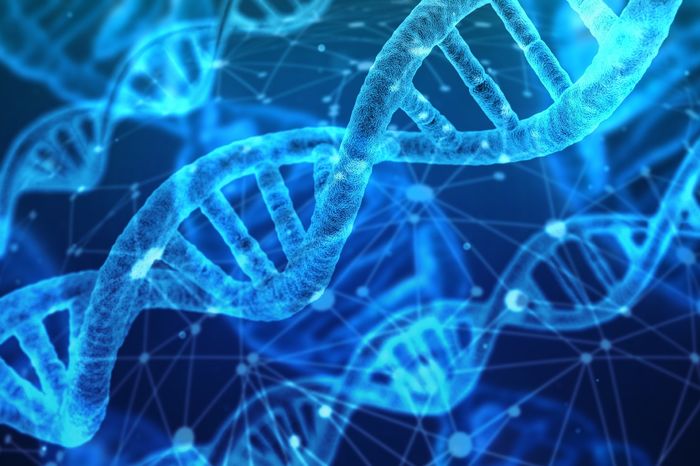Blood, spit and tears: the future of cancer diagnosis
Lucy George discusses the new methods improving outcomes for cancer patients

Early diagnosis of cancer is crucial to survival. Over the past 50 years, the percentage of the UK population dying with cancer has fallen by 22%, while cancer diagnosis has risen by almost 50%. The ‘liquid biopsy’ approach to cancer diagnosis – detecting genetic material from cancer in bodily fluids such as blood, saliva and tears – can provide safer alternatives to surgical biopsies, while diagnosing patients sooner to provide the best chances of survival. But what do these methods entail?
“The usefulness of tears as opposed to other fluids is the high concentration of proteins found in tear fluid, allowing for more reliable detection”
miONCO-Dx is a simple blood test, currently in clinical trials with claims of detecting up to twelve lethal types of cancer before symptoms even develop. Just ten drops of blood are required for the detection of specific genetic material in the body associated with cancer. microRNAs are small molecules controlling gene expression. Specific microRNAs shed by tumours can act as indicators of tumour development if detected in the blood. The use of AI allows miONCO-Dx to interpret the results of each blood test, allowing for predictions of the type of cancer an individual has, along with its bodily location – supposedly with 98% accuracy.
A leading cause of cancer deaths is late diagnosis, reducing the effectiveness of treatment. Survival rates for cancer diagnosed at an early stage can be as high as 90%, while as little as 10% of patients may survive their late cancer diagnosis. To have a reliable diagnostic method for twelve of the most lethal and prevalent cancers in the UK, which include lung, bowel and breast cancer, would revolutionise outcomes for millions of patients in the UK through earlier detection. It remains to be seen whether the results of the miONCO-Dx clinical trial on 8000 patients will be as successful as expected, but the possibilities are exciting.
“Just ten drops of blood are required for the detection of specific genetic material in the body associated with cancer”
As of 2025, prostate cancer is the most commonly diagnosed form of cancer in England, and is just one of the many types detected by miONCO-Dx. But another method of testing is showing promising results without any blood or needles required. A new study has shown the success of a quick and easy spit test in determining an individual’s lifetime risk of prostate cancer development, through calculating a ‘polygenic risk score’. This involves taking a saliva sample, extracting the DNA, and analysing 130 single nucleotide polymorphisms (variations at one position of a DNA sequence) associated with increased prostate cancer risk.
Out of the patients identified as high-risk following saliva testing, 40% were subsequently diagnosed with prostate cancer, despite reporting little to no symptoms. Moreover, almost 75% of these cases would not have been detected with the use of a PSA test, the UK’s current screening method for prostate cancer. This innovative approach is incredibly valuable, as our polygenic risk score does not change with age, unlike the levels of prostate-specific antigen in the blood, making the saliva test extremely useful as a tool for accurate prostate cancer early detection.
While this new screening approach may lead to improved outcomes for the thousands of men diagnosed with prostate cancer each year, the spit test is only validated for those with European ancestry, despite Black African and Caribbean men being at the highest risk of developing prostate cancer in the UK. It is clear that more work needs to be done to achieve equal outcomes for prostate cancer patients, starting with new detection methods that can accurately identify black patients at the highest risk of cancer diagnosis.
“The spit test is only validated for those with European ancestry, despite Black African and Caribbean men being at the highest risk of developing prostate cancer in the UK”
Following prostate cancer, breast cancer is the second most common cancer in the UK, and the most common amongst women. While miONCO-Dx also aims to detect breast cancer at early stages, there is also ongoing research into the use of tears to diagnose breast cancer as an alternative non-invasive method. Tear fluid can be collected with filter paper, and used to analyse proteins as potential ‘biomarkers’ of breast cancer, specific molecules that may indicate the presence of a tumour. The usefulness of tears as opposed to other fluids is the high concentration of proteins found in tear fluid, allowing for more reliable detection.
And it’s not just breast cancer that is seeing this approach. Researchers are looking into the use of tear fluid to diagnose brain tumours early, given that these tumours do not shed genetic material into the blood in the same way that other cancers do. These early diagnostic methods for various cancer types have the power to transform the outcomes of thousands of patients diagnosed with cancer every year in the UK, through earlier detection and quicker access to life-saving treatments. The results of current clinical trials will tell us how likely it is for this to become reality.
 Interviews / You don’t need to peak at Cambridge, says Robin Harding31 December 2025
Interviews / You don’t need to peak at Cambridge, says Robin Harding31 December 2025 News / Downing investigates ‘mysterious’ underground burial vault 29 December 2025
News / Downing investigates ‘mysterious’ underground burial vault 29 December 2025 News / Unions protest handling of redundancies at Epidemiology Unit30 December 2025
News / Unions protest handling of redundancies at Epidemiology Unit30 December 2025 Lifestyle / Ask Auntie Alice29 December 2025
Lifestyle / Ask Auntie Alice29 December 2025 Features / ‘Treated like we’re incompetent’: ents officers on college micromanagement30 December 2025
Features / ‘Treated like we’re incompetent’: ents officers on college micromanagement30 December 2025









